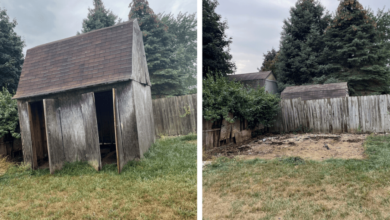Best Used Hoppers and Bins: Key Features to Look for Before Purchasing

When buying used hoppers and bins, making the right choice ensures smooth operations, cost savings, and longevity. However, evaluating used equipment demands extra caution to avoid unexpected repairs and downtime. In this guide, we’ll discuss the essential features to assess before purchasing the best used hoppers and bins for your industrial or commercial needs.
Whether you’re in the food, chemical, plastic, or manufacturing industry, this checklist will help you make informed decisions when exploring Used Hoppers For Sale.
- Material Compatibility
Different industries have specific requirements for material storage and transport. Hoppers and bins are typically constructed from materials such as:
- Stainless steel for food or pharmaceutical applications (to prevent contamination).
- Carbon steel for industrial applications where durability is essential.
- Plastic or polyethylene for lightweight materials and weather resistance.
Before purchasing, ensure the bin or hopper’s material aligns with the nature of the product being handled. A hopper designed for chemicals may not work effectively for food-grade products due to contamination risks.
- Capacity and Size Requirements
Evaluating the capacity is critical when choosing the right hopper or bin. Factors to consider include:
- Volume: Ensure the hopper can hold the required quantity without frequent refilling.
- Weight capacity: Confirm the bin can withstand the weight of the materials you plan to store.
Oversized equipment might waste space, while undersized hoppers can lead to inefficiencies and bottlenecks. Carefully assess your production or storage needs to find the optimal size.
- Structural Integrity and Wear
Used equipment might show signs of wear. It’s essential to inspect for:
- Dents or cracks in the body, which could affect structural stability.
- Corrosion or rust that could compromise longevity.
- Seam strength and welding quality, ensuring there are no leaks.
A structurally sound hopper or bin ensures safety during operation and reduces the risk of product loss.
- Mobility and Transport Options
Some industries require portable hoppers and bins for easy transport across facilities. If you need mobility, look for:
- Forklift pockets or caster wheels for easy handling.
- Tilt or dump functions to simplify unloading operations.
- Stackable bins to save space when not in use.
Check the mobility features if your operations demand frequent movement of hoppers or bins between stations.
- Discharge Mechanism and Flow Control
The efficiency of the discharge system is vital to prevent clogging and ensure smooth material flow. Examine the following discharge features:
- Slide gates or valves that allow controlled release of materials.
- Angle of the hopper walls—steeper walls facilitate better flow for powders or granules.
- Agitators or vibrators, if needed, to avoid blockages for sticky materials.
Choosing a hopper with an appropriate discharge system minimizes downtime and keeps your operations running smoothly.
- Ease of Cleaning and Maintenance
Used hoppers and bins can accumulate residues from previous operations. It’s important to choose equipment that is:
- Easy to clean with smooth interior surfaces.
- Compatible with cleaning-in-place (CIP) systems for industries requiring stringent hygiene.
- Designed for minimal maintenance, reducing long-term repair costs.
Hoppers with accessible openings make cleaning easier and help maintain product quality, especially in food and pharmaceutical industries.
- Compatibility with Existing Systems
Check whether the hopper or bin is compatible with your existing equipment, such as conveyors or pneumatic systems. Look for:
- Inlet and outlet dimensions that match your current setup.
- Customizable adapters for seamless integration.
- Automated sensors or monitoring systems, if applicable, for more efficient operations.
Proper integration reduces downtime and ensures smooth operations.
- Condition of Additional Components
Used hoppers and bins may come with extra components, such as:
- Lids or covers to protect contents from contamination or spillage.
- Seals or gaskets to prevent leaks and maintain airtight conditions.
- Control panels or sensors for automated material handling.
Be sure to inspect these components to ensure they are functional and compatible with your operation needs.
- Reputation of the Seller
When browsing used hoppers for sale, it’s essential to deal with reputable sellers. Look for:
- Reviews and testimonials from other buyers.
- Warranty options or return policies, even on used equipment.
- Clear documentation about the history and previous usage of the equipment.
Working with a trustworthy seller ensures you get high-quality equipment with no hidden issues.
- Price vs. Value
While price is a significant factor, it’s important to balance cost with value. Compare multiple listings to determine if the hopper or bin offers good value for the price. Don’t just opt for the cheapest option—consider the long-term savings from reduced maintenance and better efficiency.
Conclusion
Investing in the best used hoppers and bins can significantly reduce costs while ensuring efficient material handling. However, it’s essential to thoroughly inspect features such as material compatibility, structural integrity, discharge systems, and mobility options. By considering these key factors, you can make a smart purchase that aligns with your operational needs.
When searching for Used Hoppers for Sale, ensure that you buy from reputable sellers and verify the equipment’s condition. With the right choice, you’ll enjoy the benefits of lower costs, seamless integration, and long-lasting performance.




